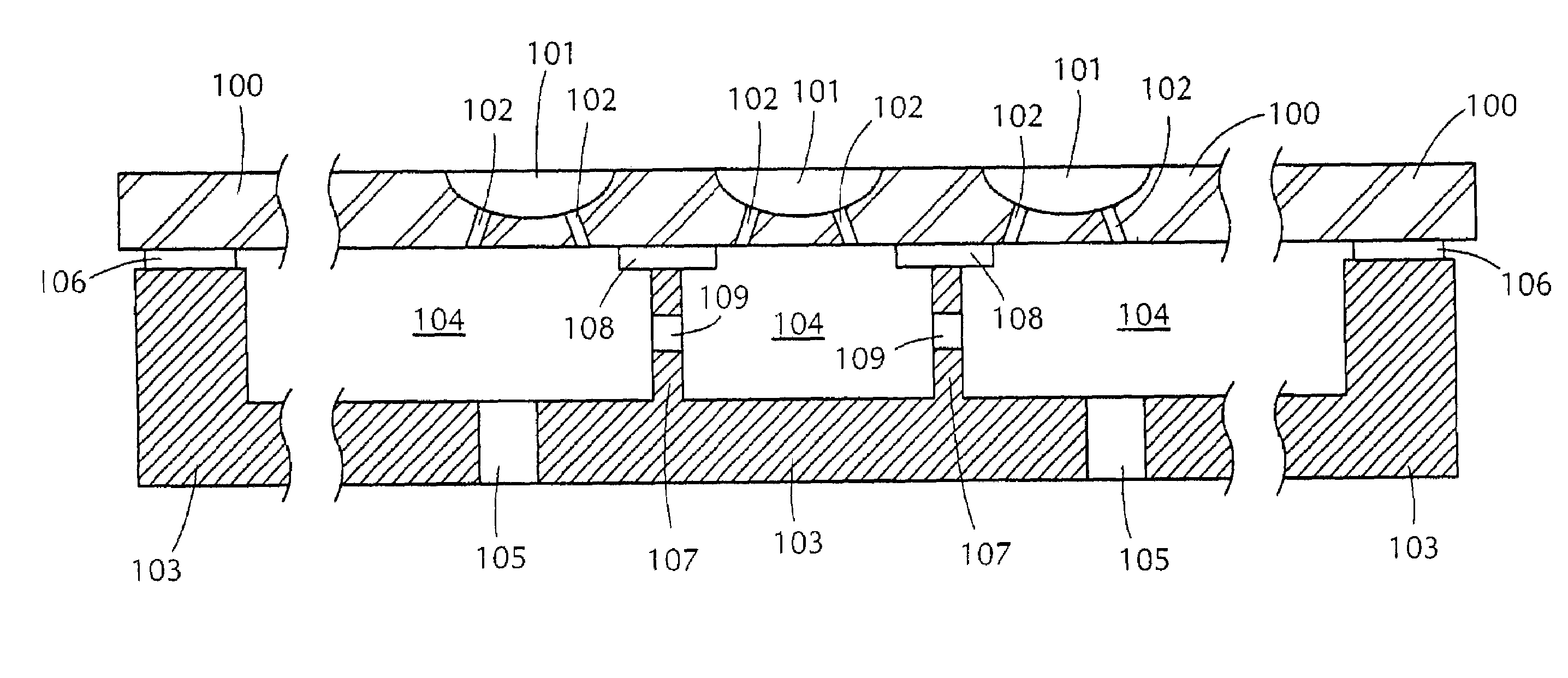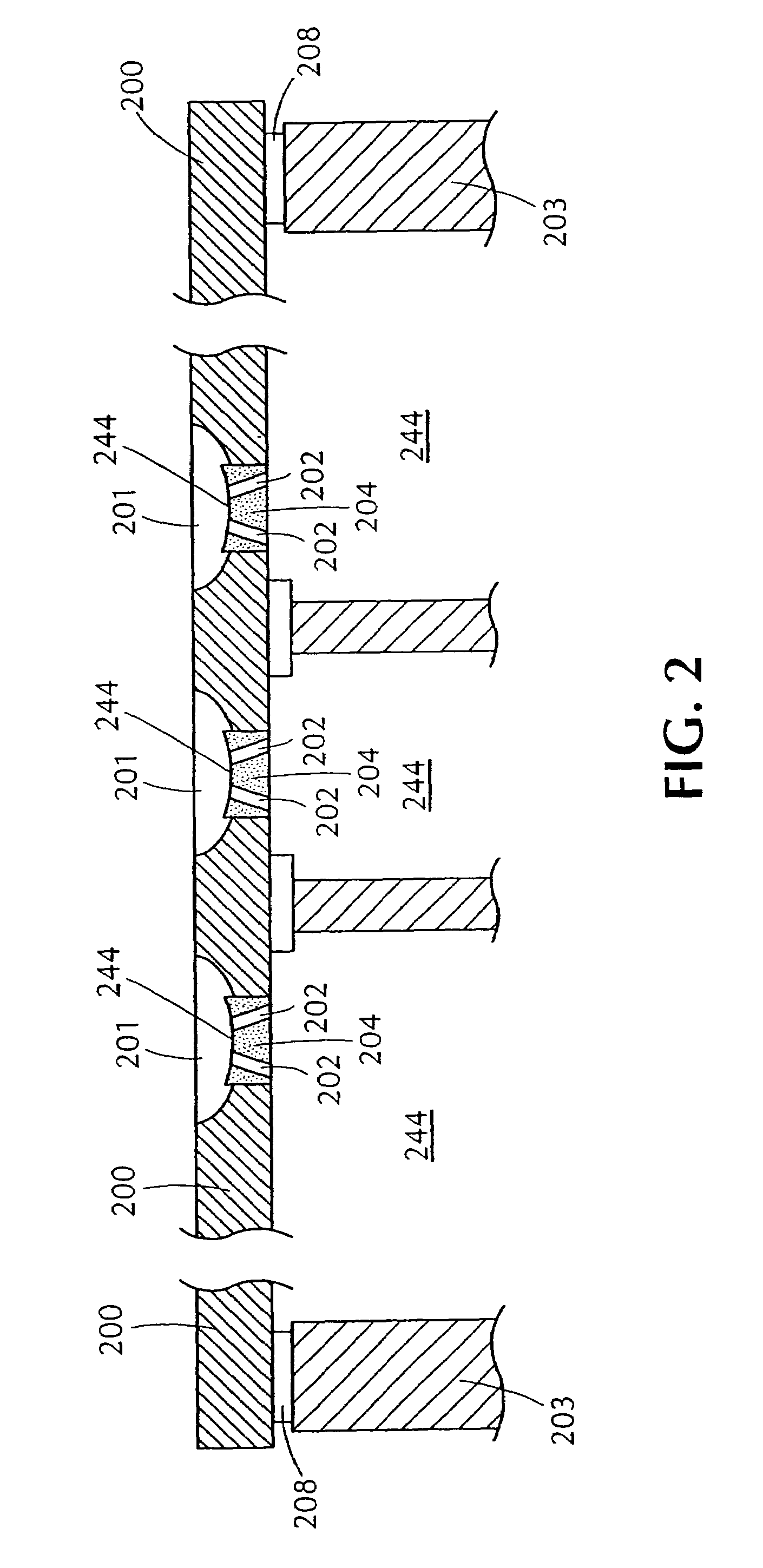Method to print multicolor images on edible pieces
a multi-color printing and edible technology, applied in the field of printing edible images, can solve the problems of smearing, skewing, overprinting, etc., and achieve the effect of preventing longitudinal shifting, skewing or yawing, and direct transfer of such methods to edible images
- Summary
- Abstract
- Description
- Claims
- Application Information
AI Technical Summary
Benefits of technology
Problems solved by technology
Method used
Image
Examples
Embodiment Construction
[0048]The method of this invention forms composite images, composed of at least two component images, on edible pieces by maintaining the orientation of each piece from one printing station to another printing station effective to substantially form each component image in registration to each other. The registration of each component image is maintained by causing each piece to remain in a constant orientation with respect to the surface that transports the pieces from printing station to printing station. The orientation of the pieces to the transporting surface is fixed by firmly securing each piece to a recess portion of the transporting surface.
[0049]As described above, multicolor printing refers to the formation of an image (a composite image), which can be, for example, graphic, type, or mixture of type and graphic, from a sequence of component images. Each component image can also be graphic and / or type and each component image can be a different color, the same color, a dif...
PUM
| Property | Measurement | Unit |
|---|---|---|
| Pressure | aaaaa | aaaaa |
| Width | aaaaa | aaaaa |
| Transport properties | aaaaa | aaaaa |
Abstract
Description
Claims
Application Information
 Login to View More
Login to View More - R&D
- Intellectual Property
- Life Sciences
- Materials
- Tech Scout
- Unparalleled Data Quality
- Higher Quality Content
- 60% Fewer Hallucinations
Browse by: Latest US Patents, China's latest patents, Technical Efficacy Thesaurus, Application Domain, Technology Topic, Popular Technical Reports.
© 2025 PatSnap. All rights reserved.Legal|Privacy policy|Modern Slavery Act Transparency Statement|Sitemap|About US| Contact US: help@patsnap.com



